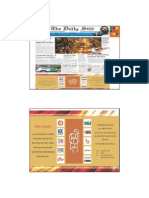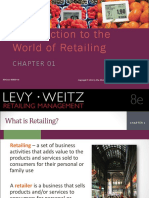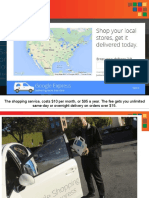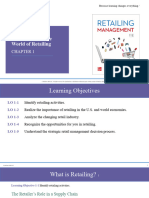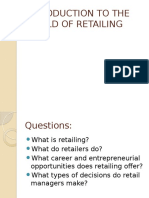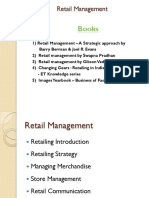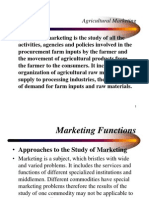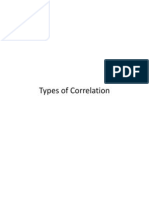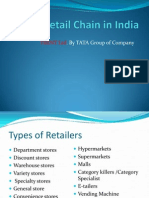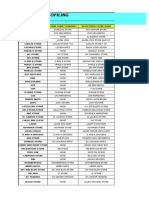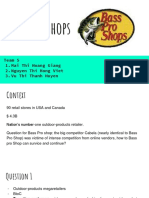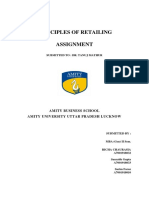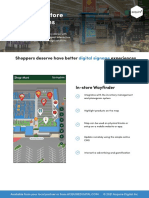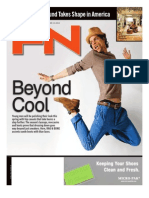0% found this document useful (0 votes)
14 views32 pagesIntroduction
The document provides an overview of retailing, defining it as the final stage of economic activity where businesses sell products and services to consumers. It discusses the evolution of retail, the rise of consumerism, the impact of technology, and the significance of retailers in the supply chain. Additionally, it highlights career opportunities in retailing and addresses common misconceptions about the industry.
Uploaded by
Njuguna ReubenCopyright
© © All Rights Reserved
We take content rights seriously. If you suspect this is your content, claim it here.
Available Formats
Download as PPT, PDF, TXT or read online on Scribd
0% found this document useful (0 votes)
14 views32 pagesIntroduction
The document provides an overview of retailing, defining it as the final stage of economic activity where businesses sell products and services to consumers. It discusses the evolution of retail, the rise of consumerism, the impact of technology, and the significance of retailers in the supply chain. Additionally, it highlights career opportunities in retailing and addresses common misconceptions about the industry.
Uploaded by
Njuguna ReubenCopyright
© © All Rights Reserved
We take content rights seriously. If you suspect this is your content, claim it here.
Available Formats
Download as PPT, PDF, TXT or read online on Scribd
/ 32








